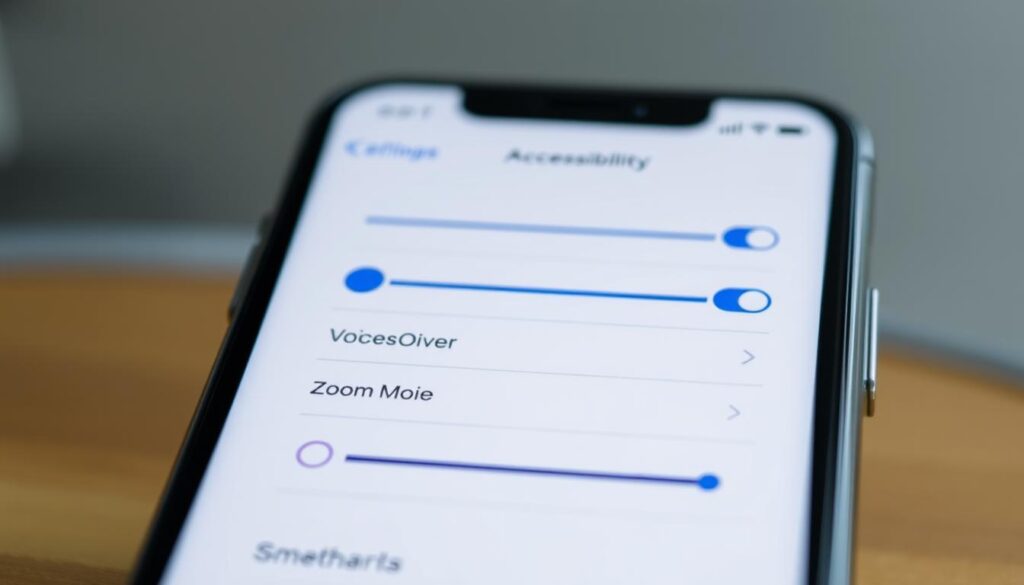- acessibilidade-tipo-r”>Understanding Acessibilidade Tipo R
- The Importance of Accessibility in Modern Society
- Key Components of Acessibilidade Tipo R
- 1. Universal Design Principles
- 2. Adaptability
- 3. Sensory Considerations
- 4. Technology and Innovation
- Implementing Acessibilidade Tipo R in Urban Planning
- 1. Engaging Stakeholders
- 2. Comprehensive Assessments
- 3. Sustainable Development Goals
- Case Studies: Successful Acessibilidade Tipo R Projects
- 1. The Renaming of Urban Parks
- 2. Public Transportation Improvements
- 3. Smart Home Innovations
- Challenges and Solutions in Acessibilidade Tipo R
- 1. Financial Constraints
- 2. Resistance to Change
- 3. Keeping Up with Technological Advances
- Future Directions of Acessibilidade Tipo R
Acessibilidade Tipo R: Exclusive Guide to Effortless Access
Understanding Acessibilidade Tipo R
Acessibilidade Tipo R is a term that signifies a critical shift in how we perceive and implement accessibility in various environments, particularly when it comes to urban planning and architectural design. This concept embodies the idea of fostering spaces that are not only compliant with legal standards but are also genuinely user-friendly for everyone, including individuals with disabilities. A comprehensive understanding of Acessibilidade Tipo R is essential for professionals in urban planning, architecture, and policy-making.
The Importance of Accessibility in Modern Society
Accessibility is more than a set of guidelines; it is a fundamental human right that ensures everyone has the ability to navigate their surroundings. In many cases, traditional spaces can often be filled with barriers that hinder the mobility of individuals with differing abilities. Acessibilidade Tipo R addresses these concerns by promoting inclusive designs that cater to various needs.
1. Enhancing Independence
Ensuring that public and private spaces are accessible translates to fostering a greater sense of independence for those with mobility issues. A well-designed environment can empower individuals to carry out daily activities without relying on assistance, enhancing their quality of life.
2. Increasing Participation
When spaces are accessible, participation in social, cultural, and economic activities increases. This inclusivity is vital for building diverse communities that thrive through the contributions of all members.
3. Legal Compliance and Ethical Responsibility
Adhering to accessibility standards is not just a legal requirement but an ethical responsibility. Acessibilidade Tipo R helps organizations avoid potential litigation while also promoting a culture of inclusivity and respect.
Key Components of Acessibilidade Tipo R
Understanding the core principles behind Acessibilidade Tipo R can help create genuinely accessible environments. Below are the components that form the backbone of this concept:
1. Universal Design Principles
Universal design plays a significant role in Acessibilidade Tipo R. It is an approach that aims to design products, environments, and systems to be usable by all people, regardless of their age, ability, or status. Here are some core principles:
– Equitable Use: The design should be usable by people with diverse abilities.
– Flexibility in Use: The design accommodates a wide range of individual preferences and abilities.
– Simple and Intuitive Use: The design communicates information effectively.
2. Adaptability
One of the principles in Acessibilidade Tipo R is ensuring that spaces can adapt to meet various needs. Adaptable features might include:
– Reinforced walls to support grab bars
– Modular furniture that can be repositioned as needed
– Areas that can be reconfigured for different functions
3. Sensory Considerations
Not only is physical accessibility important, but sensorial aspects should also be considered. This includes:
– Sound Design: Implementing acoustics that benefit individuals with hearing impairments.
– Visual Cues: Using color contrasts to assist those with visual impairments in navigating spaces.
4. Technology and Innovation
Advancements in technology are increasingly intertwined with accessibility. Innovations like smart homes, applications designed for navigation, and assistive technologies are vital for developing spaces that comply with the Acessibilidade Tipo R principles. For example, voice activated systems can make environments more navigable for those with physical limitations.
Implementing Acessibilidade Tipo R in Urban Planning
Implementing Acessibilidade Tipo R in urban environments involves a multi-faceted approach. Here are several strategies for effective execution:
1. Engaging Stakeholders
One of the most critical steps in implementing accessibility projects is involving various stakeholders. This includes:
– Community Members: Residents, especially those with disabilities, provide crucial insights into their needs and experiences.
– Local Business Owners: Engaging with businesses can facilitate adjustments necessary for compliance and better service to customers.
– Government Agencies: Collaboration with local governments can ensure that policies align with inclusive goals.
2. Comprehensive Assessments
Conducting thorough accessibility assessments of existing public spaces is crucial. This involves:
– Identifying Barriers: Recognizing physical and sensory barriers that limit access.
– Evaluating Current Compliance: Understanding how current structures align with existing laws and guidelines.
3. Sustainable Development Goals
Integrating the sustainability of designs is necessary. Acessibilidade Tipo R aligns with several United Nations Sustainable Development Goals (SDGs), such as:
– Goal 10: Reduced Inequalities
– Goal 11: Sustainable Cities and Communities
Incorporating these goals ensures that accessibility efforts are sustainable and long-lasting.
Case Studies: Successful Acessibilidade Tipo R Projects
To better understand how Acessibilidade Tipo R can be practically applied, let’s examine a few case studies that showcase successful implementations.
1. The Renaming of Urban Parks
Several cities have undertaken projects to rename and redesign urban parks to be more inclusive. This often involves:
– Adding accessible pathways
– Installing braille signage
– Creating sensory gardens for individuals with visual impairments
In one project in São Paulo, community engagement with local disability advocacy groups led to the successful reimagining of a previously neglected park, turning it into a vibrant, accessible community space.
2. Public Transportation Improvements
Public transportation is often a significant barrier for those with disabilities, but cities like Lisbon have taken steps to enhance accessibility in this domain. Some improvements include:
– Elevators in metro stations
– Audio and visual aids for route information
– Designated spaces in buses for wheelchairs
These changes drastically increase the ease of movement for individuals who rely on public transportation.
3. Smart Home Innovations
Incorporating technology into homes has proven beneficial. Homes equipped with smart technologies that facilitate ease of access can help individuals with restricted mobility enjoy greater independence. Features such as automated doors, adjustable countertops, and voice-controlled lighting systems are just a few examples of successful applications.
Challenges and Solutions in Acessibilidade Tipo R
While the implementation of Acessibilidade Tipo R presents multiple benefits, it also comes with its challenges. Recognizing these barriers allows for the development of viable solutions.
1. Financial Constraints
Many municipalities struggle with budgets that limit accessibility enhancements. Potential solutions include:
– Grants and Public Funding: Applying for grants focused on accessibility improvements.
– Public-Private Partnerships: Collaborating with businesses willing to invest in community enhancements.
2. Resistance to Change
Often, there’s resistance within communities when it comes to altering established designs or routines. Building awareness through:
– Workshops and Community Events: Educating the public on the benefits of accessibility can reshape perceptions.
– Testimonials from Users: Sharing positive stories from those who benefited from accessibility can dispel myths and doubts.
3. Keeping Up with Technological Advances
Technology changes rapidly, which can make it challenging to keep spaces as accessible as possible. Proactive strategies include:
– Regular Reevaluations: Maintaining consistent assessments to ensure facilities adapt to new technologies and remain inclusive.
– Continuous Training: Investing in ongoing education for designers and planners about the latest accessibility technologies and practices.
Future Directions of Acessibilidade Tipo R
Looking ahead, it is crucial to anticipate emerging trends and expectations in accessibility. With an increasingly aging population and evolving societal norms (Incomplete: max_output_tokens)


